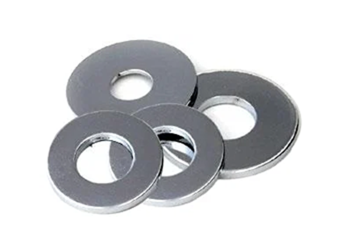ное. . 26, 2024 08:05 Back to list
Tips for Selecting the Appropriate Screw for Your Project Needs
How to Choose the Right Screw for Your Project
Choosing the right screw for your project might seem straightforward, but a wide variety of factors can influence your decision. Whether you are working on a DIY project, a construction job, or a craft endeavor, selecting the appropriate screw is crucial for ensuring durability, safety, and overall success. Here are several key considerations to help you choose the right screw for your specific needs.
1. Understand the Different Types of Screws
Screws come in various types, each designed for specific applications. Some common types include
- Wood Screws These screws are specifically designed for use with wood. They typically have a sharp tip for easy penetration and coarse threads to grip the wood securely. - Machine Screws Designed for use with metal or plastic components, machine screws require a pre-drilled hole and often use a nut for secure fastening. - Sheet Metal Screws These have sharp threads and a pointed tip, allowing them to penetrate metal sheets without the need for pre-drilling. - Self-Drilling Screws Also known as Tek screws, these screws have a drill bit tip that allows them to create their own hole while being installed, making them ideal for thin metals.
Understanding the various types of screws will help narrow down your options based on your project requirements.
2. Consider the Material
Screws are made from different materials, each offering a unique set of properties. The most common materials include
- Steel This is the most commonly used material for screws, known for its strength and durability. Galvanized or stainless steel screws are ideal for outdoor applications due to their resistance to rust. - Brass These screws are corrosion-resistant and often used in electrical applications. However, they are not as strong as steel screws and should be used in non-load-bearing applications. - Plastic Plastic screws can be used in applications where corrosion is a concern, and they are non-conductive, making them suitable for electronic components.
Choosing the right material is critical, especially if your project involves exposure to the elements or high-stress scenarios.
3. Size Matters
Screw size is essential for ensuring proper fit and function. When selecting a screw, consider the following factors
how to choose the right screw

- Length The screw should be long enough to provide adequate grip but not so long that it risks damaging the material being fastened. A good rule of thumb is to ensure that the screw penetrates at least half the thickness of the material being joined. - Diameter The thickness of the screw (measured in gauge) also matters. A thicker screw offers more strength, but it may not fit into a pre-drilled hole designed for a thinner screw.
Consult a screw size chart or manufacturer guidelines for assistance in selecting the appropriate dimensions for your application.
4. Thread Type
The thread design of a screw plays a pivotal role in its application. For example
- Coarse Threads These are better suited for softer materials like wood and provide faster driving and withdrawal. - Fine Threads Ideal for harder materials, fine threads offer greater holding power and are less likely to strip when tightened.
Understanding the thread type will help you achieve a secure fastening suitable for your project.
5. Driving Type
Finally, consider the driving type or head style of the screw, as this affects how you will install it. Common head styles include
- Flat Head Sits flush with the surface, perfect for finished surfaces. - Pan Head Offers a rounded appearance and provides a larger bearing surface. - Phillips Head Designed for easy engagement with a screwdriver, allowing for more torque.
Choose the driving type based on the tools you have and the appearance you desire for the finished product.
Conclusion
Selecting the right screw may seem like a small detail, but it can significantly impact the success of your project. By understanding the types, materials, sizes, thread types, and head styles, you can make informed decisions that enhance the integrity and longevity of your work. Take the time to evaluate these aspects, and you’ll achieve a professional-grade outcome in no time!


